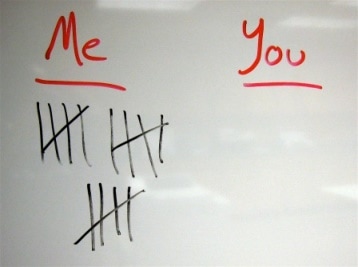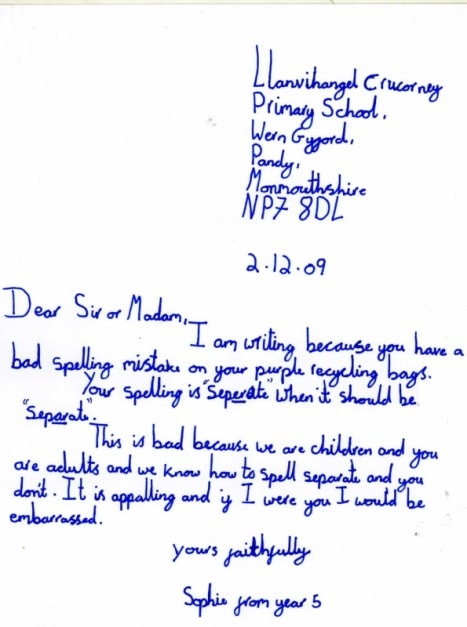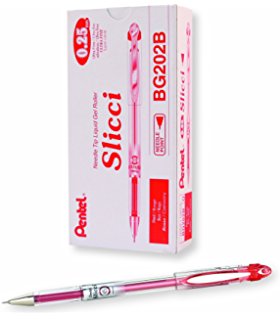|
Proofreading courses, such as my own No-Nonsense Proofreading Course, will teach you how to proofread. Obviously. But there are lots of things that proofreading courses don’t teach you. My own proofreading course concentrates on method and technique as well as how to acquire proofreading assignments, testimonials and establish your own proofreading business. I did, however, leave a few things out in the interest of keeping things tightly focused and relevant. You can think of these topics as the scenes that end up on the cutting room floor when a movie is being edited. So, rather like the deleted scenes that turn up on a DVD release, here they are for your consideration and enjoyment. Proofreading Course Deleted Scene OneProofreader Etiquette Proofreader etiquette is a very simple thing. In fact, it can be summed-up in just two little words: Don’t gloat. During my time as an Operations Manager at Shop Direct Home Shopping Limited, I had to hire a number of proofreaders. Some of these guys were old school proof readers and had been interrogating and signing proofs since not long after they’d made the transition from short trousers to long. Others however, were a little green around the gills and had been hired on the basis of their enthusiasm, attention to detail and sound command of the English language. These ‘young guns’, once they’d been around for a while and had made themselves comfortable, without fail, made the same schoolboy error. They gloated. At some point, they came across a spelling error or grammatical gaffe so outrageous that they just couldn’t resist the urge to make an issue of it. They would make a sarcastic comment in the margin or show the shameful blunder to their colleagues or even take the offending proof to the clanger’s originator and warm their hands on the glow from their blushing cheeks. Firstly, this is just plain rude. We’re only human. We make mistakes. All of us. That’s why we have proof readers. Really, as a proofreader, you ought to be praising the sheer fallibility of humankind. Without it, you’d be out of a job. Secondly, what goes around comes around. We're only human. We make mistakes. All of us. Including proofreaders. And God help the gloating proof reader who, in a moment of lapsed concentration, allows even the tiniest error to slip through his or her fingers. I’ve actually seen people queue for an opportunity to indulge in a little counter-gloating. Be warned. Be nice. Proofreading Course Deleted Scene TwoProofreaders, Beware! Post-It Notes are Dangerous! Don't get me wrong, I love Post-It notes. They’re great. Arthur Fry and Spenser Silver, I salute you! However. Whilst Post-It notes are perfect for leaving messages on desks, fridges, peoples’ foreheads and just about anywhere else, they are not the proofreader’s friend. It’s easy to be fooled into believing they are just that – the proofreader’s friend – because they make pretty good bookmarks, which gives them credibility as a literary accessory. However. They should not, ever, be used to pass on instructions to an author, typesetter or page make-up artist. And you can blame Mr. Silver for this one, if you feel so inclined. The adhesive created by Spenser Silver is intentionally low-tack. Which means Post-It notes can be peeled off, reapplied, peeled off, reapplied... It also means, of course, that Post-It Notes have a tendency to fall off. I know why Post-It Notes are employed as instruction-delivery systems from proofreader to author. They’re really useful (or seem really useful) when proofreading a piece of artwork, say a double-page spread of a magazine, where there’s very little room to write comments and queries. But you must resist. If those little yellow stickies drop off, your amends will never reach their destination. Or worse, the Post-It Note could drop off and be reapplied in the wrong place, assigning your remarks to an entirely different sentence or paragraph. Who knows what chaos could result from an incident like that? My advice? Either use a separate sheet of paper for queries (appropriately labelled) or use fully-adhesive white labels, the kind you use to label-up envelopes and packages. I love Post-It Notes. I really do. Except when I’m proofreading. Proofreading Course Deleted Scene ThreeProofreading Isn't All About Spelling Errors and Grammatical Gaffes If anyone ever asks you what a proof reader does, for heaven’s sake don’t start talking about spelling mistakes and grammatical errors right off the mark. You’ll see their eyes glaze over in under a minute and they’ll do that stretching-mouth, flaring-nostrils thing which means they’re yawning but they don’t want to hurt your feelings so they’re trying to kind of seal it in. Do you remember that scene in Dead Poets’ Society when Robin Williams as John Keating asks his class for which single endeavor language was developed? He receives the unimaginative answer of “To communicate” and swiftly counters with, “No! To woo women!” Well, the ‘what does a proof reader do’ question should be tackled in pretty much the same way. That isn’t to say we proofread in order to dazzle the opposite sex (although, why not? Why not?), but it most certainly is about more than just spelling errors and grammatical blunders. We proofread to spare blushes. We proofread to protect our employers and clients from embarrassment. Let’s take a look at the kind of embarrassment, in fact the sheer humiliation which the strategic deployment of an effective proof reader would quickly have nipped in the bud. In December of last year, a school teacher spotted a spelling error on Monmouthshire Council’s recycling bags. The instruction to ‘separate’ various materials for recycling purposes was printed as ‘seperate’. An easy mistake to make, and not an uncommon one. Hardly humiliating, you might think. However, the teacher in question, Helen Pritchard, took the recycling bag to her class at Llanvihangel Crucorney School and asked her 20 pupils if they could spot the mistake. Without exception, the primary level students nailed it. They then wrote a letter to the council (see below) expressing their disapproval. Okay, having a classroom full of ten-year olds admonish you for poor spelling is a little embarrassing but still a few lengthy strides away from ‘humiliating’. Well, this little episode made it into the local press. Okay, we’re edging toward humiliating now, but we’re not all the way there yet. Then, the piece was taken up by the BBC and featured on their website. The BBC website receives 1.2 million page views and 80 million hits per month. Like I said: humiliating. So, we proofreaders don’t simply expose spelling errors and grammatical slip-ups. No, we shield our employers and clients from the searing heat of unwanted publicity in a media-soaked era. Okay, so we do that by trawling for spelling mistakes and poorly-executed English, but that's not going to hold anyone's attention at a dinner party, is it? Proofreading Course Deleted Scene FourYour Choice of Pen is Important After you’ve been proofreading for a while, you’ll start to get a little bit picky about pens. You’ll find some pens are too splodgy and some pens deliver precisely the right amount of ink onto the page. You’ll find some pens are too scratchy and some pens seem almost to caress the paper. You’ll find some pens are easy to grip and some pens are like eels with a nib. You’ll find some pens endure and some pens dry out if you leave the lid off for more than a nanosecond. You’ll find some pens are tough as Tonka toys and some pens are delicate and doomed. And, eventually, you’ll find a pen that, like Baby Bear’s porridge, is just right. It can take a while. Thankfully, there’s already somebody out there who’s as obsessive about pens as you are destined to be. He’s called The Pen Addict. Not only does this guy product-test and review a plethora of pens, he also provides you with a large image of a writing sample (like the one above) for each pen so you can judge for yourself. You may find this pen-obsessive individual a little disturbing at first. Try not to be too judgmental, you’re looking at a snapshot of your future self. To help you along, I got in touch with The Pen Addict and he has kindly made a couple of recommendations. “I have had one or two proof readers mention to me that the Pentel Slicci 0.25mm red gel ink pen is one of their favorites. The line is sharp, consistent, and skip-free, and the red ink is bright. This pen has no problems stopping and starting. The only issue some have with this pen is that the barrel diameter is too narrow for their tastes. Another option would be the Uni-Ball Signo DX in 0.38mm or 0.5mm line widths. It comes in a 0.28mm, but it is much more scratchy than the Slicci.” Our thanks to The Pen Addict for his expert advice. Visit the website here. Proofreading Course Deleted Scene FiveWe are Proofreaders. We are Not the Grammar Police. The worst proofreaders, the very worst, perceive themselves as ‘guardians of language’, as defenders of ‘correct usage’. They actively seek out dangling modifiers, split infinitives, sentences ending with prepositions and so forth. Paradoxically, they appear to take pleasure in the displeasure that these contraventions cause them. I have no problem with people who are niggled by such things. People get niggled by things. It’s human nature. Personally, I can’t stand the ‘beep’ that supermarket bar-code readers make. I don’t know why. Something about the pitch and the clipped quality of the thing (it seems to stop just as it starts) winds me up. I also find the writings of the likes of Lynn Truss very entertaining. However, it is only that: entertainment. Eats, Shoots and Leaves shouldn’t be perceived as some kind of instruction manual. It’s a piece of linguistic fluff, not a stick for beating ‘less educated’ people with. I mean, ‘not a stick with which to beat ‘less educated’ people’. The proofreader who practically obliterates a document with red scrawl is not going to be very popular when further investigation reveals that the majority of his or her comments consist of little more than splitting hairs over split infinitives and the like. If you’re proofreading an academic tract, then, yes, you probably need to ensure that the strictest rules of grammar are adhered to. But the vast majority of documents you will proofread are likely to be presented in a less formal style, and intentionally so. When proofreading, don’t ask yourself whether or not something is grammatically correct; ask yourself is it clear, effective and pleasant to read? Obviously, some grammatical errors are likely to call into question the professionalism of the copy’s originator, so, yes, all those apostrophes do need to be in the right place and we don’t want ‘you’re’ where we’re supposed to have ‘your’ etc. As The No-Nonsense Proofreading Course relentlessly reiterates, let common sense be your guide. In my experience, the proof reader who labors over ‘who versus whom’ is the proof reader who misses a glaring spelling error in 36-point Helvetica Black. Proofreading Course Deleted Scene SixLook After Your Eyes As a proofreader, your eyes are your most important asset, so it’s vitally important that you afford them the proper care and respect. The No-Nonsense Proofreading Course covers the importance of frequently resting your eyes and ensuring you attend regular appointments with your optician, but there is another area of eye care which is just as important. Nutrition. Poor eye health is often brought about as a result of poor diet. The right foods, containing the right vitamins, minerals, antioxidants and so forth, can play a significant role in ensuring clear and effective vision long into your twilight years. And that means an effective and sustained income long into your twilight years, too. Now, you don’t need me to tell you about the importance of Vitamins A, C and E (commonly referred to as ‘antioxidant vitamins’); you’ll find them in green vegetables, oranges, tomatoes, raw carrots, peppers, Brussel sprouts and so forth, and it goes without saying that they’re very good for your eyes. However, less is known about the antioxidants Lutein and Zeaxanthin (now there's something to add to your dictionaries!). Collectively known as 'carotenoids', these antioxidants have been identified as contributing to a reduction in AMD or Age-related Macular Degeneration. Both Lutein and Zeaxanthin occur naturally in a host of fruit and vegetables. Lutein can be found in mangos, bilberries, yellow peppers, kale, spinach and broccoli. Zeaxanthin occurs in oranges, sweet peppers, broccoli, corn, some lettuces, spinach, tangerines and eggs. As you can see, some of the fruits and vegetables rich in eye-loving vitamins A, C and D are also reliable sources of Lutein and Zeaxanthin. If anyone has any recipe ideas that contain a good helping of the fruits and vegetables listed above, let us know!
0 Comments
Your comment will be posted after it is approved.
Leave a Reply. |
Details
Testimonials
“I am one of those many fools who paid a huge amount of money for a useless course. This book... has opened so many doors for me. I now look on Mike as my mentor as I embark on a career. Thank you Mike.” Emma Steel, Proofreader and International Structural Editor. “ I thoroughly enjoyed the course and am so glad that I decided to take it... the whole experience was invaluable. My proofreading service is now well established and your course played no small part in getting it off the ground.” Hache L. Jones, Proofreader. “I'd just like to thank you first of all for writing such a great, straight forward eBook, and then going above and beyond what I would even expect as a customer by providing us, completely free of charge, updated versions months later!” Rachel Gee, Trainee Proofreader. “What can I say? Worth every penny and then some! God Bless! This a fabulous course.” Teresa Richardson, Proofreader. “As someone who has effectively been proofreading for thirty years, I found Mike’s No-Nonsense Proofreading Course an invaluable introduction and a very useful practical guide to many aspects of this discipline. I can wholeheartedly recommend it as the ideal starting point, and much more besides.” Jeremy Meehan, Proofreader. Blog AuthorMy name's Mike Sellars and I'm an experienced proofreader and the author of The No-Nonsense Proofreading Course. Click here to find out more about me. The No-Nonsense Proofreading CourseA Fraction of the Cost of Other Proofreading Courses NOTE: Stock is currently limited to 10 per day, so we can continue to deliver exceptional after-sales service, answer queries and provide open-door support. Credit card and PayPal payments accepted. “As someone who has been proofreading for 30 years, I found Mike’s course an invaluable introduction and a very useful practical guide to many aspects of the discipline. I can wholeheartedly recommend it.” Jeremy Meehan, Proofreader. Still want to find out more? Click here. Proofreading Categories
All
Proofreading Archives
July 2024
|








 RSS Feed
RSS Feed
